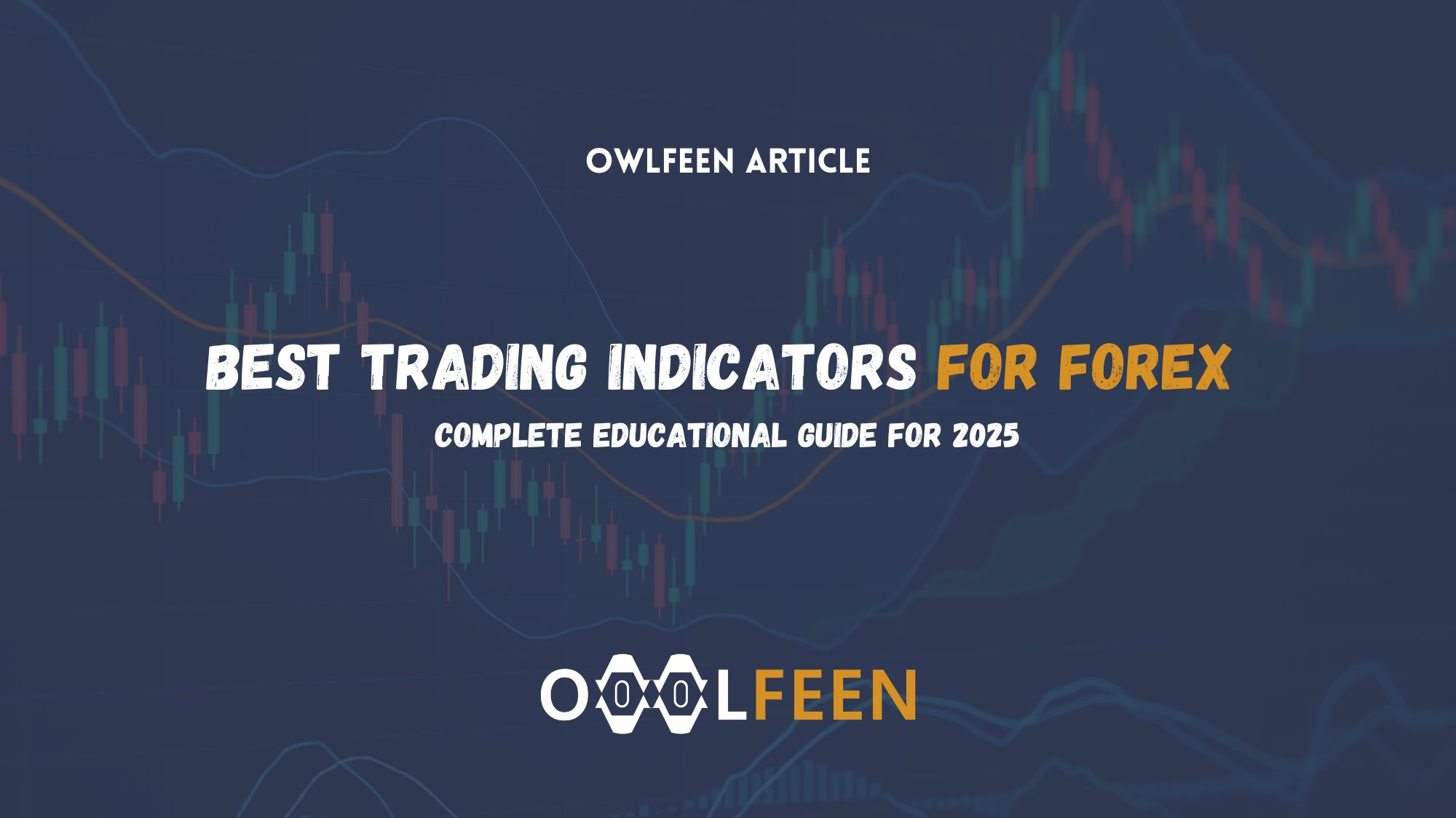Trading in the forex market is one of the most analytical and strategic forms of investing. To succeed, traders must rely on clear data instead of emotion, and that is where technical indicators come in. Indicators transform price movement into visual insights that reveal trends, strength, volatility, and timing. This guide explains the best and most reliable forex trading indicators, how to use them, and how to combine them for better trading decisions.
What Are Forex Indicators
A forex indicator is a mathematical tool that processes price, volume, or volatility data to help traders analyze market behavior. Indicators assist in determining when to enter or exit trades, measure the strength of trends, and identify potential reversals.
There are two main types of indicators. Trend indicators follow market direction and help traders stay aligned with it. Momentum indicators show how strong or weak the movement is. Professional traders often combine both types for better accuracy because trend indicators define direction while momentum indicators define timing.
Moving Averages
What it is
A moving average smooths the price data to highlight the direction of the market over a specific period. The most common types are the Simple Moving Average (SMA) and the Exponential Moving Average (EMA). SMA gives equal weight to all data points, while EMA reacts faster to recent prices.
How to use it
-
Use a 200-period moving average to determine the long-term trend.
-
Use a 50-period or 20-period moving average for short-term movements.
-
When a shorter moving average crosses above a longer one, it signals a potential uptrend.
-
When it crosses below, it suggests possible downward momentum.
Best practices
Moving averages work best in trending markets. Avoid using them in ranging conditions where frequent crossovers may produce false signals. Combine them with momentum indicators like RSI or MACD for confirmation.
Relative Strength Index (RSI)
What it is
RSI is a momentum oscillator that measures how quickly and strongly price moves. It ranges from 0 to 100 and helps detect overbought or oversold conditions.
How to use it
-
When RSI rises above 70, the market may be overbought and due for a pullback.
-
When RSI falls below 30, it may be oversold and due for a rebound.
-
Watch for divergence between price and RSI. If price makes a new high but RSI does not, the trend might be weakening.
-
Use the 50-level as a neutral point. RSI above 50 supports bullish strength, while below 50 supports bearish movement.
Best practices
RSI performs best when combined with a trend indicator. During strong uptrends, RSI can remain above 70 for extended periods, so do not treat it as a sell signal too early. Adjust its period based on volatility, for example, shorter settings for fast-moving pairs.
Moving Average Convergence Divergence (MACD)
What it is
MACD tracks the relationship between two EMAs to measure momentum and trend strength. It includes the MACD line, signal line, and histogram.
How to use it
-
When the MACD line crosses above the signal line, it can indicate bullish momentum.
-
When it crosses below, it signals bearish momentum.
-
The histogram represents the difference between the two lines. Expanding bars show stronger momentum, while shrinking bars indicate weakening trends.
-
Watch for MACD divergence, where the indicator moves in the opposite direction of price, as a sign of possible reversals.
Best practices
MACD works best in trending markets. Combine it with moving averages or ADX to filter sideways conditions. Avoid using it alone in volatile or flat markets.
Bollinger Bands
What it is
Bollinger Bands consist of a moving average and two outer bands that expand and contract with volatility. They help visualize whether price is high or low relative to its recent range.
How to use it
-
When price touches or moves outside the upper band, the market may be overbought.
-
When price touches the lower band, it may be oversold.
-
Narrow bands indicate low volatility and potential for breakout moves.
-
Wide bands suggest high volatility where prices may consolidate.
Best practices
Use Bollinger Bands with a momentum indicator such as RSI or MACD to confirm overbought or oversold conditions. During strong trends, prices can stay near the outer bands for a long time, so avoid trading against the trend.
Average True Range (ATR)
What it is
ATR measures market volatility by calculating the average range between the highest and lowest prices over a certain number of periods. It does not show direction but helps determine how far price typically moves.
How to use it
-
Use ATR to set stop-loss and take-profit distances. For example, if ATR is 40 pips, set a stop-loss about 1.5 times that distance.
-
Use ATR to adjust position size. Smaller size in high volatility markets and larger size in calm markets.
-
Compare current ATR values with previous ones to assess if volatility is increasing or decreasing.
Best practices
ATR is a volatility filter, not a signal generator. Use it to improve risk management and trade planning rather than to time entries.
Stochastic Oscillator
What it is
The stochastic oscillator compares the current closing price to the price range over a specific time period to measure momentum.
How to use it
-
Readings above 80 suggest overbought conditions, while below 20 indicate oversold areas.
-
When the %K line crosses above the %D line from below 20, it may indicate a potential buy signal.
-
When it crosses below from above 80, it may indicate a potential sell signal.
-
Look for divergence between stochastic and price to identify possible reversals.
Best practices
Focus on stochastic buy signals in uptrends and sell signals in downtrends. Avoid countertrend trades unless confirmed by other indicators.
Ichimoku Cloud
What it is
Ichimoku Cloud is a complex yet complete indicator that provides insights into trend direction, strength, and support or resistance.
How to use it
-
When price is above the cloud, the market is in an uptrend.
-
When price is below the cloud, it is in a downtrend.
-
Crossovers between Tenkan-sen and Kijun-sen lines can indicate short-term shifts in momentum.
-
The cloud area acts as dynamic support or resistance.
Best practices
Wait for full confirmation from multiple Ichimoku components before entering trades. It performs best on higher timeframes where trends are clearer.
Average Directional Index (ADX)
What it is
ADX measures trend strength using a scale from 0 to 100. It includes two directional indicators, +DI and −DI, that show the direction of movement.
How to use it
-
ADX below 20 signals weak trends or sideways markets.
-
ADX above 25 indicates stronger trends.
-
When +DI crosses above −DI, it supports a bullish signal. When it crosses below, it supports bearish movement.
Best practices
Use ADX as a trend filter. Only take trend-following trades when ADX is rising. If ADX is flat or falling, avoid trend-based strategies.
Fibonacci Retracement
What it is
Fibonacci retracement identifies possible support and resistance levels using percentages based on the Fibonacci sequence, such as 23.6%, 38.2%, 50%, 61.8%, and 78.6%.
How to use it
-
Draw the retracement tool from swing low to swing high in an uptrend or swing high to swing low in a downtrend.
-
Observe how price reacts near the retracement levels.
-
Combine Fibonacci with indicators like moving averages or RSI for confirmation.
Best practices
Fibonacci levels work best when they align with trend direction. Avoid trading every retracement blindly and confirm with market structure or volume.
Commodity Channel Index (CCI)
What it is
CCI measures how far the price deviates from its average over a set period, helping traders identify momentum shifts.
How to use it
-
Values above +100 suggest overbought conditions, while below −100 indicate oversold levels.
-
A crossover above zero confirms bullish strength, while below zero confirms bearish momentum.
-
Divergence between CCI and price often signals weakening trends.
Best practices
Use longer periods to reduce noise and shorter periods for fast signals. Combine CCI with trend indicators to confirm direction before entry.
Combining Indicators for Stronger Analysis
Combining indicators improves accuracy and reduces false signals. For example, a moving average can show trend direction, RSI can confirm entry timing, and ATR can define risk distance. Another effective combination is using Bollinger Bands for volatility and MACD for momentum confirmation.
Always ensure that indicators serve different purposes. Using multiple indicators that measure the same thing adds clutter but not clarity.
Conclusion
Indicators are essential tools for understanding forex market behavior. Each indicator has a specific role, from trend confirmation to momentum detection or volatility measurement. Moving Averages, RSI, MACD, Bollinger Bands, ATR, Stochastic, Ichimoku, ADX, Fibonacci, and CCI remain the most reliable tools for traders in 2025. When used with discipline and risk management, these indicators create a clear structure for consistent and informed decision-making.



